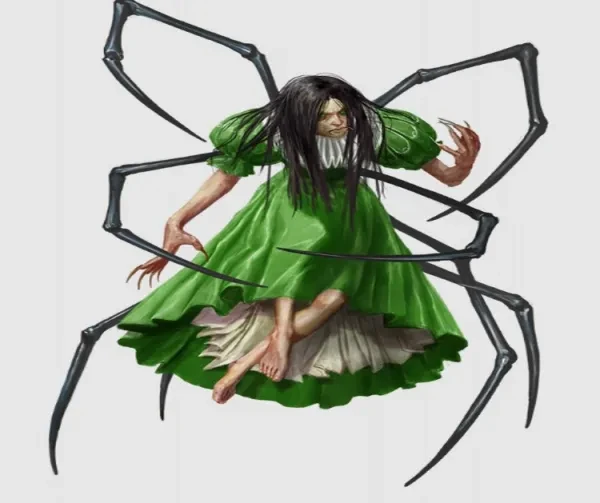
In addition to humans, elves, and dwarves, there are many other humanoid creatures in the Pathfinder universe. Sometimes, your party will get into conflict with them due to differing values or each wanting the same thing. But remember, many humanoids might be more open to reason so there can be other ways to resolve their conflicts.
15. Goblin Commandos
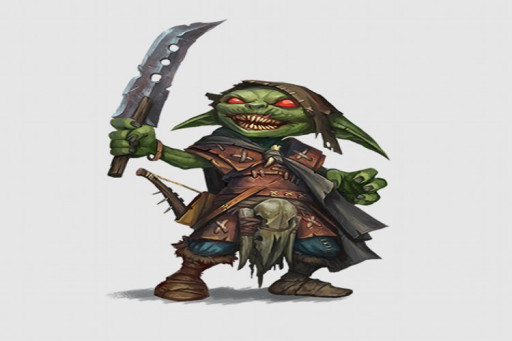
What to do when your new party needs their first taste of combat? The simplest answer, and often the best one, is adding goblins. They’re reasonably easy for new players and new GMs.
If you’re starting a game with a bunch of level 1 characters, a group of Goblin Commandos, or a Goblin Commando with a group of other varieties of goblins splashed in, are good choices. They don’t hit very hard so as long the party uses teamwork, they will do well. Commando tactics rarely vary from traditional goblins.
That said, their power can be raised up a bit if your players are looking for a challenge. Consider giving them zombie or planar corruption templates. If the party is looking for a piece of equipment as part of their quest, a Commando could be using it since using things without regard for what they are is a goblin trait.
Goblin Commando stats:
- Level 1
- Perception +5; darkvision
- Languages Common, Goblin
- Skills Acrobatics +6, Athletics +6, Intimidation +5, Nature +5, Stealth +6
- Str +3, Dex +3, Con +2, Int -1, Wis +0, Cha +2
- Items horsechopper, leather armor, shortbow (20 arrows)
- AC 17; Fort +7, Ref +8, Will +5
- HP 18
- Goblin Scuttle Trigger A goblin ally ends a move action adjacent to the commando. Effect The goblin commando Steps.
- Speed 25 feet
- Melee horsechopper +8 [+3/-2] (reach 10 feet, trip, versatile P), Damage 1d8+3 slashing
- Ranged shortbow +8 [+3/-2] (deadly 1d10, range increment 60 feet, reload 0), Damage 1d6 piercing
14. Goblin Pyro
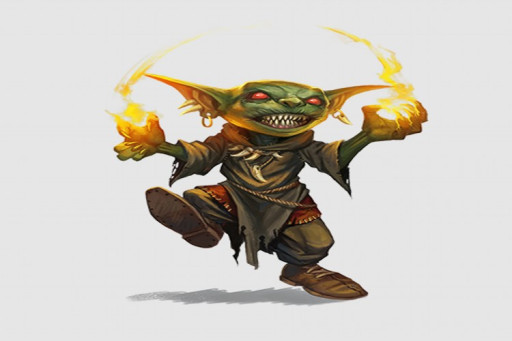
Pathfinder has upgraded its roster of goblins. Instead of being one-note punching bags or disposable lackeys for bigger threats, goblins like the Goblin Pyro are expanding into fields like magic. That said, their general foolishness keeps them from ever truly mastering magic.
However, the magic they have is still dangerous. Burning hands is still an area-of-effect spell that can do a lot of damage and can be hard for characters with low reflex saves. Spells like tanglefoot can be good to support other goblins. Assuming they don’t set other goblins on fire, first.
Goblin Pyros are another good tutorial monster. They can be used to teach players about area-of-effect magic and targeting priorities. They’re also good for teaching new players about the game’s new save system.
Goblin Pyro stats:
- Level 1
- Perception +4; darkvision
- Languages Common, Goblin
- Skills Acrobatics +7, Fire Lore +7, Stealth +7
- Str +0, Dex +4, Con +2, Int +0, Wis -1, Cha +3
- Items torch
- AC 17; Fort +5, Ref +9, Will +4
- HP 15
- Goblin Scuttle Trigger A goblin ally ends a move action adjacent to the pyro. Effect The goblin pyro Steps.
- Speed 25 feet
- Melee torch +7 [+2/-3] (fire), Damage 1d4 bludgeoning plus 1 fire
- Arcane Spontaneous Spells DC 16, attack +6; 1st burning hands, grease (3 slots); Cantrips (1st) light, mage hand, produce flame, tanglefoot
13. Sea Devil Scout
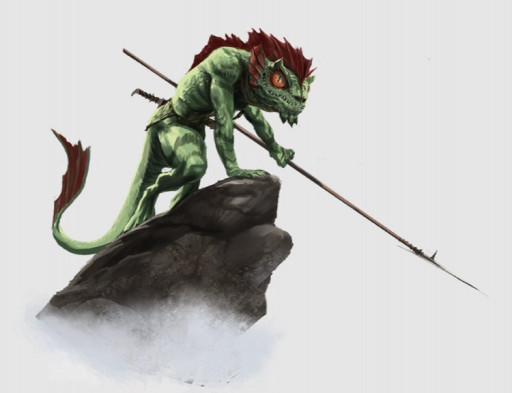
If you’re doing a nautical adventure with a splash of horror on the side, consider the Sea Devil Scout. These monsters are weak scouts for the other sea devils. They’re [retty low-level but shouldn’t be underestimated.
Their longspears have a 10-foot reach. Meaning they can be hard to get in range of. Luckily, they can’t do attacks of opportunity. They also have claws and throwing spears.
The real problems are the blood frenzy and the shark summoning. The Sea Devils can summon and command sharks within 150 feet. And their frenzy will activate when they damage someone.
Sea Devil Scout stats
- Level 2
- Perception +9; darkvision, wavesense 30 feet
- Languages Aquan; shark commune 150 feet
- Skills Athletics +9 (+11 to Swim), Intimidation +5, Stealth +8, Survival +7
- Str +3, Dex +4, Con +1, Int +0, Wis +3, Cha -1
- Shark Commune (mental, telepathy) The sea devil can communicate telepathically with sharks within range. It can communicate only simple concepts like “come,” “guard,” or “attack.”
- Items longspear, spear
- AC 18; Fort +7, Ref +10, Will +7
- HP 30
- Speed 25 feet, swim 35 feet
- Melee longspear +11 [+6/+1] (reach 10 feet), Damage 1d8+3 piercing
- Melee claw +11 [+7/+3] (agile), Damage 1d6+3 slashing
- Melee jaws +11 [+6/+1], Damage 1d8+3 piercing
- Ranged spear +12 [+7/+2] (thrown 20 feet), Damage 1d6+3 piercing
- Blood Frenzy (rage) Requirements The sea devil is not fatigued or already in a frenzy. Trigger The sea devil deals bleed damage to a living creature. Effect The sea devil flies into a frenzy that lasts 1 minute. While frenzied, the sea devil gains a +1 status bonus to attack rolls with its claws and jaws, gains a +4 status bonus to damage rolls with its claws and jaws, gains 7 temporary HP until the end of the frenzy, and takes a –2 status penalty to AC. The sea devil can’t voluntarily stop its frenzy. After its frenzy, the sea devil is fatigued.
- Bloodletting When the sea devil deals piercing or slashing damage, it also deals 1d4 persistent bleed damage if the target was flat-footed or if the attack was a critical hit.
12. Morlock
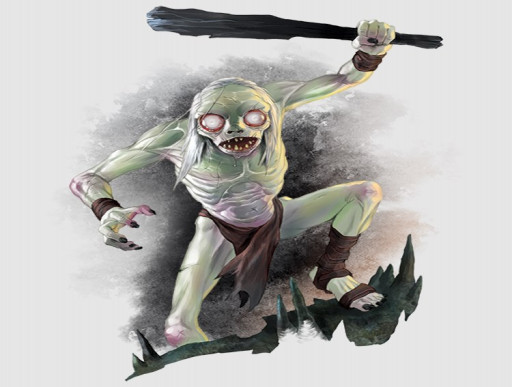
For adventures that do a lot of underground exploration, a Morlock attack is another good low-level encounter. Generations ago, they were humans like everyone else. But for unknown reasons, they went underground. Now, they attack underground travelers.
Morlocks rarely get enough to eat so they often use their jaws. Primitive clubs are their general weapons of choice when they can’t bite. Their swarming stance allows two Morlocks to share a space and boost each other’s attack.
Their more interesting ability is their instinctual tinkering. If there are traps or constructs laying around the room, a Morlock can repair them provided it’s less than double its level. So if a party isn’t engaging with all the Morlocks, a stray one could reset traps that can triggered in the chaos of battle.
Morlock stats:
- Level 2
- Perception +7; darkvision
- Languages Undercommon
- Skills Acrobatics +7, Athletics +8 (+11 Climbing), Crafting +8 (Repair only), Stealth +9
- Str +4, Dex +3, Con +1, Int -2, Wis +3, Cha +1
- Light Blindness
- Items club
- AC 17; Fort +7, Ref +11, Will +9; +2 status to all saves vs. disease and poison
- HP 38
- Speed 30 feet, climb 20 feet
- Melee club +9 [+4/-1], Damage 1d6+4 bludgeoning
- Melee jaws +9 [+5/+1] (agile), Damage 1d4+4 piercing
- Ranged club +8 [+3/-2] (range increment 10 feet), Damage 1d6+4 bludgeoning
- Instinctual Tinker The morlock tinkers with an adjacent construct or mechanical hazard. They attempt a Crafting check against the construct's or hazard's Fortitude DC. The morlock can't succeed if the target's level is more than double the morlock's.
- Critical Success The target gains 4d6 HP and a +1 circumstance bonus to attack rolls for 1 minute.
- Success The target gains 2d6 HP.
- Critical Failure The morlock injures itself, taking 2d6 damage (typically bludgeoning, piercing, or slashing, but potentially a different type at the GM's discretion).
- Leap Attack The morlock Strides up to twice its Speed, during which it attempts a High Jump or a Long Jump. At any point during its movement, the morlock can make a melee Strike against an enemy in its reach. The morlock then can't use Leap Attack for 1 round.
- Sneak Attack A morlock's Strikes deal an extra 1d6 precision damage to flat-footed creatures.
- Swarming Stance A morlock can share the same space as another morlock, but no more than two morlocks can occupy the same space. When morlocks share the same space, they gain a +1 circumstance bonus to attack rolls.
11. Morlock Engineer
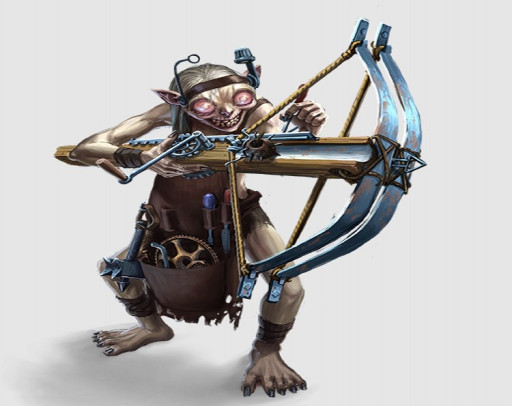
Your standard Morlock isn’t too smart. They can do some tinkering but they won’t be winning science awards. A Morlock Engineer on the other hand shouldn’t be left alone. They’re not geniuses but their tinkering abilities make them far more dangerous.
These upgraded versions feature warhammers instead of clubs. For ranged weapons, they have projectile launchers that can launch improvised projectiles made from whatever is around. This can allow them to alter their damage type.
Putting a broken-down construct or a bunch of traps and hazards near these guys will make things more interesting. It effectively puts a time clock on the battle. The longer the fight goes on, the more hazardous the battle goes on.
Morlock Engineer stats:
- Level 3
- Perception +8; darkvision
- Languages Undercommon
- Skills Acrobatics +8, Athletics +9 (+11 Climbing), Crafting +10, Stealth +10
- Str +4, Dex +3, Con +2, Int +1, Wis +3, Cha +0
- Light Blindness
- Items projectile launcher, warhammer
- AC 18; Fort +7, Ref +12, Will +10; +2 status to all saves vs. disease and poison
- HP 46
- Speed 30 feet, climb 20 feet
- Melee warhammer +11 [+6/+1] (shove), Damage 1d8+6 bludgeoning
- Melee jaws +11 [+7/+3] (agile), Damage 1d4+6 piercing
- Ranged projectile launcher +10 [+5/+0] (deadly d8, range increment 50 feet, versatile P), Damage 1d6+6 bludgeoning
- Improvised Projectile The morlock engineer quickly crafts an improvised projectile from objects it carries or that are readily accessible in adjacent squares. Where unusual materials are available, an improvised projectile might deal damage other than bludgeoning or piercing—for example, a morlock engineer by a campfire could build a projectile that deals fire damage.
- Sneak Attack The morlock deals an extra 1d6 precision damage to flat-footed creatures.
- Swarming Stance A morlock can share the same space as another morlock, but no more than two morlocks can occupy the same space. When morlocks share the same space, they gain a +1 circumstance bonus to attack rolls.
- Uncanny Tinker The morlock engineer tinkers with an adjacent construct or mechanical hazard. They attempt a Crafting check against the construct's or hazard's Fortitude DC. The morlock can't get an outcome better than failure if the target's level is more than double the morlock's. This ability reflects hasty battlefield repairs; once a construct or hazard regains Hit Points from this ability, it can't do so again until it's been Repaired.
- Critical Success The target regains 8d6 Hit Points and a +1 circumstance bonus to attack rolls for 1 minute. Alternately, the morlock can deal 8d6 damage (bludgeoning, piercing, or slashing, as chosen by the morlock engineer) to the construct or hazard.
- Success As critical success, but the target regains 4d6 Hit Points or the morlock deals 4d6 damage.
- Critical Failure The morlock injures themself, taking 3d6 damage (typically bludgeoning, piercing, or slashing, but potentially a different type at the GM's discretion).
10. Grippli Jinxer
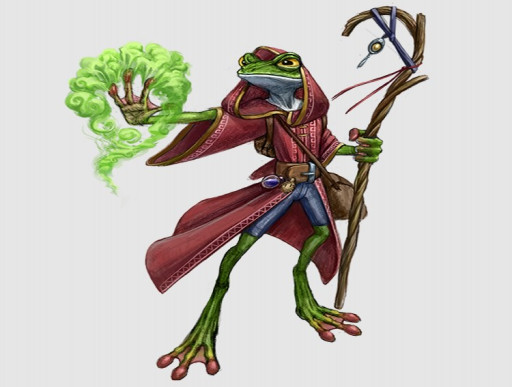
The Gripplis are often a benign race. Most of the time, these froglike humanoids are content to keep to their own affairs. However, much like humans, some groups of Grippli like the Banebacks. have chosen the side of evil. Particularly dangerous are the Jinxers.
The Grippli Jinxer is a magical threat if the party isn’t prepared. These frogs specialize in status magic like blindness and paralysis. If they are forced into a position where they have to do physical combat, their weapons can inflict poison that can do a lot of damage if left unchecked.
The Jinxer can make their poison more potent with their curse. The curse makes it harder for players to shake off the poison. They can also summon bug swarms. Which will be a problem for paralyzed party members.
Grippli Jinxer stats:
- Level 6
- Perception +16; darkvision
- Languages Common, Grippli
- Skills Acrobatics +14, Athletics +12, Intimidation +12, Nature +14, Occultism +10, Stealth +14
- Str +2, Dex +4, Con +2, Int +0, Wis +4, Cha +0
- Items dart (8), staff
- AC 23; Fort +12, Ref +14, Will +16
- HP 95
- Hypnotic Tattoos Trigger A hostile creature targets the jinxer with a melee Strike; Effect Tattoos on the jinxer's body swirl and shift in mesmerizing patterns. The creature must attempt a DC 22 Will save.
- Critical Success The creature is unaffected and is temporarily immune for 1 hour.
- Success The creature is unaffected and is temporarily immune for 1 minute.
- Failure The creature treats the jinxer as concealed until the end of its turn.
- Critical Failure The creature treats the jinxer as hidden until the end of its turn.
- Speed 25 feet, climb 20 feet; jungle stride
- Melee staff +14 [+9/+4] (two-hand d8), Damage 1d4+6 bludgeoning plus baneback poison
- Ranged dart +16 [+12/+8] (agile, thrown 20 feet), Damage 1d4+6 piercing plus baneback poison
- Occult Spontaneous Spells DC 24, attack +16; 3rd blindness, fear, paralyze (3 slots); 2nd dispel magic, summon animal (giant cockroach, giant fly, or giant tick only), vomit swarm (3 slots); 1st bane, ray of enfeeblement, spider sting (3 slots); Cantrips (3rd) chill touch, forbidding ward, know direction, shield, telekinetic projectile
- Baneback Poison (poison) Saving Throw Fortitude DC 24; Maximum Duration 6 rounds; Stage 1 2d4 poison damage and stupefied 1 (1 round); Stage 2 3d4 poison damage and stupefied 2 (1 round); Stage 3 4d4 poison damage, stupefied 3, and flat-footed (1 round)
- Curse of Baneful Venom (necromancy, occult) The jinxer magically intensifies toxins in their foes. Creatures within 30 feet of the jinxer that are currently afflicted by a poison immediately attempt their next saving throw against the poison with a –2 status penalty, then are temporarily immune to Curse of Baleful Venom for 1 hour.
- Jungle Stride Gripplis ignore difficult terrain in forests and jungles.
9. Coil Spy
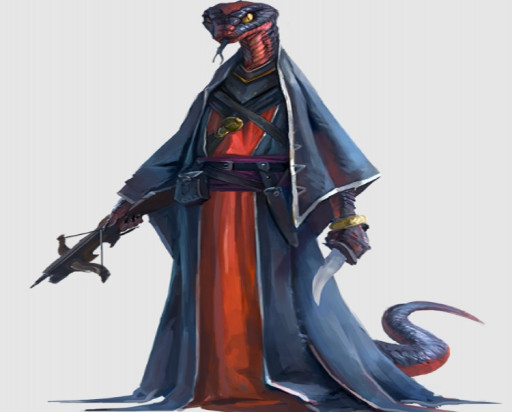
While humans won their ancient battle with serpentfolk, many have not accepted that defeat generations later. The serpentfolk society while decimated is still around in the Pathfinder world. And while they can’t wage a large-scale war, they csn be a thorn in humanity’s side.
One way is through infiltration with Coil Spies. These serpentfolk are masters of illusion and can keep up illusions spells for years, often only getting caught due to arrogance. However, catching them is only half the battle. Coil Spies wield powerful illusion and enchantment magic.
They can also be just as devastating physically. All their weapons have venom of some sort. Their crossbows have spider-venom while their swords have their own personal venom. Dealing with multiple Coil Spies can be a brutal experience, especially for players who have low fortitude.
Coil Spy stats:
- Level 4
- Perception +10; darkvision, scent (imprecise) 30 feet
- Languages Aklo, Common, Dwarven, Gnomish, Undercommon; telepathy 100 feet
- Skills Acrobatics +10, Deception +13, Diplomacy +11, Intimidation +11, Occultism +10, Society +10, Stealth +12, Thievery +12
- Str +2, Dex +4, Con +1, Int +4, Wis +2, Cha +5
- Items hand crossbow (20 bolts), hunting spider venom (2), shortsword, thieves' tools
- AC 22; Fort +9, Ref +12, Will +10 (+4 status vs. mental); +1 status to all saves vs. magic
- HP 48; Resistances poison 5
- Speed 25 feet
- Melee shortsword +14 [+10/+6] (agile, finesse, versatile S), Damage 1d6+5 piercing plus serpentfolk venom
- Melee fangs +14 [+9/+4] (finesse), Damage 1d6+5 piercing plus serpentfolk venom
- Ranged hand crossbow +10 [+5/+0] (range increment 60 feet, reload 1), Damage 1d6+3 piercing plus serpentfolk venom or hunting spider venom
- Occult Innate Spells DC 21; 4th suggestion; 3rd illusory disguise (at will); 2nd mirror image (at will); 1st ventriloquism (at will)
- Deceptive Reposition The Coil spy Strides up to half their Speed and attempts a Feint, in either order.
- Maintain Disguise A Coil spy can maintain an ongoing illusory disguise as long as they are conscious without having to re-cast the spell; they need only Cast the Spell again to reassume their illusory disguise if they wish to change their appearance or if the active spell is dispelled. Coil spies typically seek privacy when they need to sleep, as an ongoing illusory disguise ends an hour after they fall unconscious.
- Serpentfolk Venom (poison) Saving Throw DC 19 Fortitude; Maximum Duration 6 rounds; Stage 1 1d4 poison damage and enfeebled 1 (1 round); Stage 2 2d4 poison damage and enfeebled 1 (1 round)
- Sneak Attack The Coil spy's Strikes deal an extra 2d6 precision damage to flat-footed creatures.
8. Charau-ka Butchers
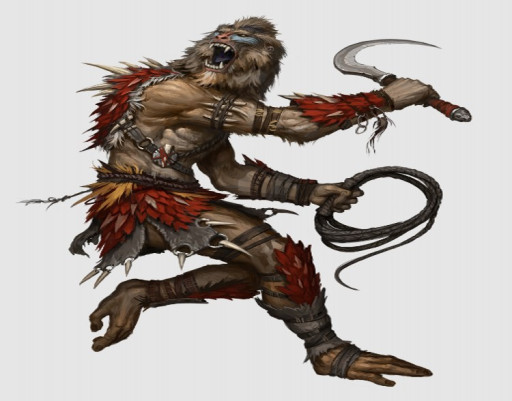
The Charau-ka are some of the most violent humanoids in the Mwangi Jungle. Though their tribes are leaderless and broken, they’re still brutal fighters, now often fighting each other as much as outsiders. The Butchers are often the most violent.
The Butchers wield deadly tridents that do a lot of damage even when they aren’t raging. When they are raging, they do even more damage. Their Blood Fury gives them additional power and restores some of their HP. When they’re raging, they can add bleed damage to their attacks.
Butchers can also be good ranged attackers. Anything around them can be turned into an improvised ranged weapon and they don’t have the standard penalties for improvised weapons. In the jungle, a Butcher has a lot of options for this.
Charau-ka Butcher stats:
- Level 6
- Perception +13; darkvision, scent (imprecise) 30 feet
- Languages Draconic, Mwangi
- Skills Acrobatics +11, Athletics +15, Intimidation +14, Religion +9, Stealth +13
- Str +5, Dex +3, Con +3, Int +0, Wis +1, Cha +2
- Items +1 striking trident, hide armor
- AC 21; Fort +16, Ref +12, Will +13
- HP 95
- Attack of Opportunity
- Blood Fury (manipulate) Trigger The charau-ka butcher deals bleed damage to a creature; Effect The charau-ka licks blood from their weapon, becoming furious. They regain 5 Hit Points and gains a +1 status bonus to attack rolls until the end of their turn.
- Speed 25 feet, climb 25 feet
- Melee trident +17 [+12/+7] (magical), Damage 2d8+8 slashing
- Melee fist +15 [+11/+7] (agile, nonlethal), Damage 1d4+8 bludgeoning
- Ranged trident +16 [+11/+6] (deadly d6, magical, thrown 20 feet), Damage 2d8+6 piercing
- Ranged thrown debris +15 [+10/+5] (deadly d6, thrown 20 feet), Damage 2d6+8 bludgeoning
- Mauler While the charau-ka butcher is raging, their melee Strikes deal an additional 1d4 persistent bleed damage.
- Rage As the barbarian class ability; AC 22, +9 Hit Points, +2 melee damage
- Shrieking Frenzy (primal, transmutation) Frequency once per hour; Trigger The charau-ka's turn begins; Effect The charau-ka is quickened until the end of their turn and can use the extra action only to Stride or Strike. While in the frenzy, the charau-ka can't speak and automatically critically fails Stealth checks, due to their loud wailing.
- Thrown Weapon Mastery Any weapon a charau-ka throws gains the deadly d6 weapon trait. Furthermore, when a charau-ka throws an improvised weapon, they do not take the –2 penalty for doing so, nor does they take a penalty for using a thrown improvised weapon with the nonlethal trait to make a lethal attack.
7. Palace Skelms
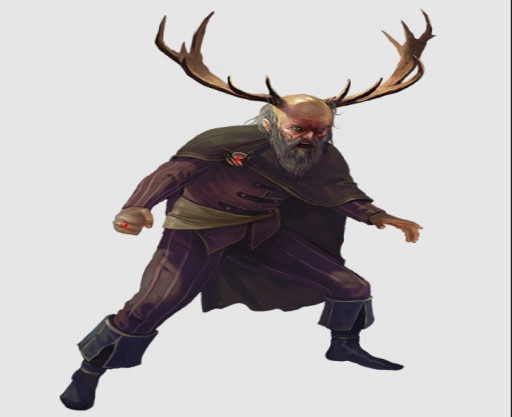
Skelms are a race of evil humanoids who prefer to make trouble through more indirect methods. Instead of attacking directly, they infiltrate positions of power. Gang leaders, clergy and even royalty can be skelms. Palace Skelms can take government positions and cause chaos.
Skelms like to create paranoia. They will worm their way into a leader’s inner-circle and convince them that their about to be betrayed or stripped of power. This can be easy to do since any palace leader that has attracted a skelm’s attention has done some terrible things to get that power.
Palace Skelms prefer not to engage in direct combat. They’ll usually have more than a few followers that they can incite to violence. They can also induce paranoia among party members.
Palace Skelm stats:
- Level 8
- Perception +15; scent (imprecise) 30 feet
- Languages Aklo, Common; tongues
- Skills Athletics +18, Deception +21, Diplomacy +17, Intimidation +17, Occultism +16, Society +16, Stealth +16, Thievery +16
- Str +6, Dex +4, Con +3, Int +4, Wis +3, Cha +5
- Items signet ring
- AC 27; Fort +17, Ref +16, Will +15; –2 to all saves vs. emotion effects
- HP 155; Weaknesses cold iron 10
- Corrupt Speech (auditory, illusion, linguistic, occult) Trigger The skelm hears a creature speak within 30 feet; Effect The skelm sows paranoia by putting treacherous words on another's lips. The skelm whispers up to 12 words and attempts a Deception check against the Perception DC of a creature other than the triggering creature within 30 feet.
- Critical Success The target hears the skelm's words as if they were spoken by the triggering creature. This can alter linguistic effects. The skelm also casts paranoia or suggestion on the target, if he likes.
- Success As critical success, except the skelm can't cast paranoia or suggestion.
- Failure The target doesn't hear the skelm's words, and they have no effect.
- Critical Failure The target hears the skelm speak the words.
- Speed 25 feet
- Melee fist +20 [+16/+12] (agile, magical), Damage 2d8+9 bludgeoning plus Grab
- Melee antler +20 [+15/+10] (magical), Damage 2d12+9 piercing plus Knockdown
- Occult Innate Spells DC 26; 4th clairaudience, enthrall, outcast's curse, paranoia (at will), private sanctum, suggestion; 2nd invisibility (×3); Cantrips (5th) daze, message; Constant (5th) tongues
- Rituals DC 26; 2nd inveigle
- Change Shape (concentrate, occult, polymorph, transmutation) The palace skelm can take on the appearance of any Medium male humanoid. This doesn't change his Speed or his attack and damage bonuses with his Strikes but might change the damage type his Strikes deal.
- Incite Violence (emotion, enchantment, occult, mental) Frequency once per day; Effect The skelm gives an impassioned speech calling for his followers to act upon their convictions. Each creature within 30 feet must attempt a DC 24 Will save.
- Critical Success The creature can immediately Strike an adjacent creature of its choosing.
- Success The creature is unaffected.
- Failure The creature immediately Strikes an adjacent creature; if multiple creatures are adjacent, the skelm chooses the target. If no creatures are adjacent, the creature is flat-footed and fascinated with the skelm until the start of its next turn.
6. Mutant Gnoll Hulk
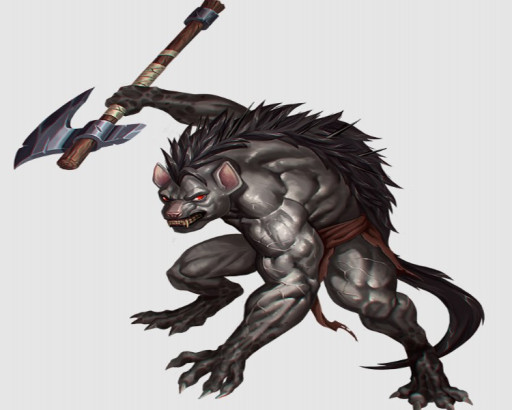
The Mana Wastes are one of the most dangerous places in the Pathfinder games. Magic doesn’t always work right, if at all. And magical energies running amok have changed the various creatures that spend prolonged amounts of time there. Usually, it’s not for the better.
Take the Mutant Gnoll Hulk. While most gnolls aren’t a major threat, these monstrosities can be killers, They wield powerful battle axes with a 10-foot reach. If disarmed, their bites are nothing to sneeze at either. They can even bite in instant retaliation to a critical hit.
Adding to their threat is the diversity of mutations they can have. They can have things like multiple eyes or poisonous pustules. Heck, you can make some of your mutations. This creature is your oyster.
Mutant Gnoll Hulk stats:- Level 9
- Perception +17; magic hunger (imprecise) 30 feet
- Languages Common, Gnoll
- Skills Acrobatics +18, Athletics +21, Intimidation +16, Survival +15
- Str +6, Dex +3, Con +4, Int +2, Wis +2, Cha +3
- Items +1 striking battle axe, composite longbow (20 arrows), leather armor
- AC 26; Fort +21, Ref +18, Will +15
- HP 195
- Vengeful Bite Trigger A creature critically hits the mutant with a melee unarmed Strike or a non-reach melee Strike; Effect The mutant makes a maw Strike against the triggering creature.
- Speed 25 feet
- Melee battle axe +22 [+17/+12] (magical, sweep, reach 10 feet), Damage 2d8+12 slashing
- Melee maw +21 [+16/+11] (reach 10 feet), Damage 2d12+12 piercing
- Ranged composite longbow +18 [+13/+8] (deadly d10, volley 30 feet), Damage 1d8+9 piercing
- Pack Attack A Mana Wastes mutant gnoll hulk deals 1d4 extra damage to any creature who's within reach of at least two of the Mana Wastes mutant gnoll hulk's allies.
- Rugged Travel A gnoll ignores the first square of difficult terrain it moves into each time it Steps or Strides.
5. Lifeleecher Brawler
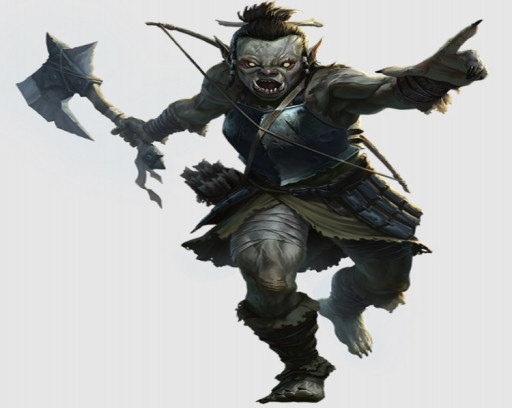
Lifeleechers are a special breed of orc. They are often feared and worshipped by their fellow orcs. They exist in a state between life and undeath due to all the negative energy they’ve absorbed.
Brawlers fight with their tusks and their claws. Being able to absorb life energy from anyone they hit is a huge problem. They’re not exactly defensive powerhouses but they can shrug off status afflictions for 11 rounds by holding their breath of all things. This can be a problem if your party relies on status afflictions.
The fact that you’re dealing with a life-absorber can make a battle devastating. They can inflict the drained status and it does stack. When you add in more orcs, you’ll have a major fight on your hands.
Lifeleecher Brawler stats:- Level 8
- Perception +15; darkvision
- Languages Common, Necril
- Skills Athletics +18, Intimidation +16, Survival +15
- Str +6, Dex +4, Con +6, Int +3, Wis +3, Cha +4
- Items +1 striking composite shortbow (20 arrows), breastplate
- AC 25; Fort +20, Ref +16, Will +13
- HP 165 (negative healing)
- Consecration Vulnerability A lifeleecher in a place of worship dedicated to a non-evil deity or on sacred ground, such as an area blessed by sanctified ground, is slowed 1.
- Mortic Ferocity As Ferocity, but the lifeleecher is also surrounded by visibly flickering fragments of the souls they've consumed, becoming concealed until the end of their next turn.
- Soul Feast (divine, necromancy, negative) Trigger A creature adjacent to the lifeleecher dies; Effect The lifeleecher consumes a portion of the creature's soul, regaining 2d8 Hit Points.
- Speed 25 feet
- Melee tusk +20 [+15/+10], Damage 2d6+6 piercing plus leech essence
- Melee claw +20 [+16/+12] (agile), Damage 2d8+6 slashing plus 1d6 persistent bleed
- Ranged composite shortbow +19 [+14/+9] (deadly d10, magical, propulsive, range increment 30 feet), Damage 2d6+3 piercing
- Death Gasp (divine, necromancy) The lifeleecher draws in a deep breath and holds it, temporarily suspending their biological processes and becoming undead. The lifeleecher gains the undead trait and becomes immune to bleed, death effects, disease, paralyzed, poison, and sleep. Any such effects the lifeleecher is currently suffering from are suspended, but take effect again once they take a breath.
- Death Gasp lasts as long as the lifeleecher holds their breath (up to 11 rounds).
- Ghost Hunter The lifeleecher's tusks have the effects of the ghost touch property rune on attacks against incorporeal undead.
- Leech Essence (divine, necromancy) When the lifeleecher damages a living or undead creature with their jaws Strike, they drain the target's life essence. The lifeleecher gains 5 temporary Hit Points that last for 1 minute, and the target must succeed at a DC 24 Fortitude save or become drained 1 if living, or stunned 1 if undead. If the target was already drained or stunned, the value of this condition instead increases by 1, to a maximum of 3.
4. Jorogumo
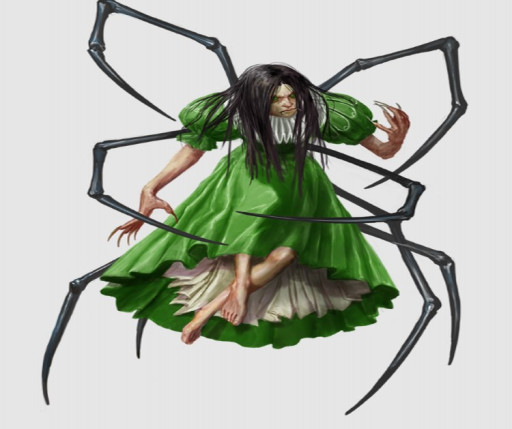
If the party isn’t a fan of spiders, they’re not going to like the Jorogumo. This creature takes the form of a beautiful human. Then the spider legs and venom come out.
The Jorogumo is an offensive and defensive powerhouse. When they’re attacked, their spider legs will come out and add another two points to their armor class which is already high. They can use their web trap to immobilize people. It can be pretty hard to break out of without a high strength or escape artist score.
Worse yet is the venom. Unlike many poisons whose duration is measured in rounds, the Jorogomo’s venom is measured in hours. This can become a major problem for parties that are unbalanced and don’t have a way to cure poison.
Jorogumo stata- Level 13
- Perception +26; darkvision
- Languages Aklo, Common, Sylvan; tongues
- Skills Acrobatics +25, Athletics +23, Crafting +22, Deception +28, Diplomacy +26, Performance +24, Stealth +23, Survival +24
- Str +6, Dex +4, Con +5, Int +3, Wis +5, Cha +7
- AC 33; Fort +22, Ref +23, Will +26
- HP 270; Resistances poison 15; Weaknesses cold iron 10
- Darting Legs Requirements The jorogumo has their spider legs extended or has Changed Shape; Trigger The jorogumo is targeted with an attack; Effect The jorogumo raises a leg, gaining a +2 circumstance bonus to AC against the triggering attack.
- Speed 30 feet, swim 30 feet
- Melee jaws +27 [+22/+17], Damage 3d12+14 piercing plus jorogumo venom
- Melee claw +27 [+23/+19] (agile), Damage 3d8+14 slashing
- Ranged web +23 [+18/+13] (range increment 60 feet), Effect Web Trap
- Occult Innate Spells DC 34; 7th summon animal (spiders only); 4th outcast's curse (×3), suggestion (×3); 3rd mind reading (at will); 1st charm (at will); Constant (5th) tongues; (2nd) speak with animals (spiders only)
- Change Shape (concentrate, occult, polymorph, transmutation) The jorogumo takes on the appearance of any Small or Medium spider. This doesn't change their Speed or Strikes.
- Jorogumo Venom (incapacitation, poison) Saving Throw DC 32 Fortitude; Maximum Duration 4 hours; Stage 1 3d6 poison damage and stupefied 1 (1 round); Stage 2 3d6 poison damage and stupefied 2 (1 round); Stage 3 4d6 poison damage and stupefied 2 (1 round); Stage 4 paralyzed for 1d4 hours.
- Spider Legs (concentrate, occult, polymorph, transmutation) Requirement The jorogumo is in humanoid form; Effect Eight large spider legs sprout from the jorogumo's back, granting them a 40-foot climb Speed and allowing them to use the Darting Legs reaction.
- Web Trap A creature hit by the jorogumo's web attack is immobilized and stuck to the nearest surface, preventing the creature from moving. The DC to Escape or Force Open the web trap is 32.
3. Great Cyclops
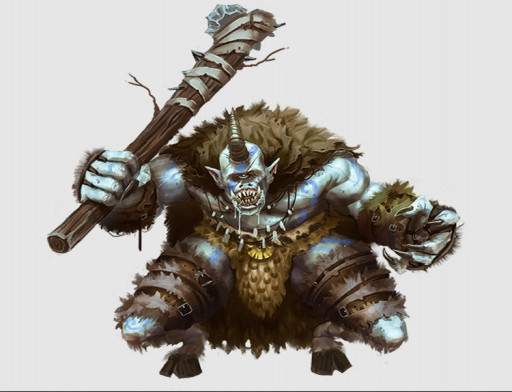
The cyclopses once ruled a great empire in the Pathfinder. They had prosperity, access to magic and a lot of knowledge (that was largely used for evil) However, thanks to a curse from an unknown source, the empire collapsed. Now, cyclopses roam as unhinged bands of raiders, The Great Cyclops is chief among them.
The fact that they’re barely above the intelligence of a slavering animal doesn’t make them any less dangerous. Physically, the Great Cyclops is a perpetually hungry and perpetually angry powerhouse. Its fists, horns, club, and large boulder, makes it a dangerous opponent.
It can cover great distances with its charge and deal a lot of damage. When it charges, it does 3d10+20 damage. It can also throw rocks a large distance and its melee attacks have a 15-foot reach.
Great Cyclops stats
- Level 13
- Perception +22; low-light vision
- Languages Common, Cyclops, Jotun
- Skills any one Lore +18, Athletics +25, Survival +22
- Str +7, Dex +1, Con +6, Int -2, Wis +4, Cha -1
- Items greatclub, hide armor
- AC 32; Fort +25, Ref +19, Will +22
- HP 235
- Catch Rock
- Ferocity
- Flash of Brutality (divination, fortune, occult) Frequency once per day, and recharges when the great cyclops uses Ferocity; Trigger The great cyclops succeeds at an attack roll. Effect The attack becomes a critical success.
- Speed 40 feet
- Melee greatclub +25 [+20/+15] (backswing, reach 15 feet, shove), Damage 3d10+13 bludgeoning
- Melee horn +25 [+20/+15] (reach 15 feet), Damage 2d10+13 piercing
- Melee fist +25 [+21/+17] (agile, reach 15 feet), Damage 3d4+13 bludgeoning
- Ranged rock +23 [+18/+13] (brutal, range increment 120 feet), Damage 4d6+7 bludgeoning
- Powerful Charge The great cyclops Strides twice and makes a horn Strike. If it moved at least 20 feet away from its starting position, the Strike’s damage is increased to 3d10+20.
- Throw Rock
2. Grendel
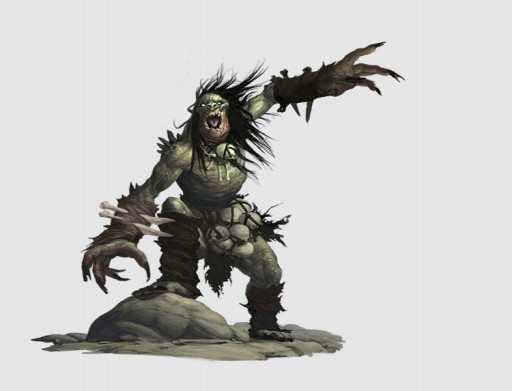
If you’ve taken an English class, you know the name Grendel. This creature comes from the story of Beowulf. Through the dark magic of public domain, Grendel has entered the Pathfinder universe.
This unique monster hates the sound of joy and parties and tries to wreck whatever party he ends up at. He’s physically powerful and hard to hit thanks to his thick hide. He also has resistance 15 to most types of damage.
His hands of the murderer deal 18 damage even on a failure. Even 3 misses with his fist attacks deal 54 damage, Its jaws are also brutal and Grendel can grind his teeth on anyone he has grabbed. If Grendel kills anyone this way, he gains 40 HP. He’s also immune to most status effects.
- Grendel stats:
- Level 19
- Perception +35; darkvision, keen hearing 120 feet
- Languages Common
- Skills Acrobatics +34, Athletics +39, Intimidation +34, Stealth +34, Survival +33
- Str +10, Dex +5, Con +7, Int +0, Wis +6, Cha +5
- Keen Hearing Grendel's hearing is a precise sense to a range of 120 feet.
- AC 44; Fort +36, Ref +32, Will +31
- HP 360; Resistances all 15 (except unarmed attacks)
- Frightful Presence (aura, emotion, fear, mental) 60 feet, DC 38.
- Attack of Opportunity Grendel gains an extra reaction at the start of each of his turns that he can use only to make an Attack of Opportunity with his claw. He can't use more than one Attack of Opportunity triggered by the same action.
- Ferocity
- Unstoppable Trigger Grendel would take persistent damage or gain one of the following conditions: blinded, clumsy, confused, controlled, dazzled, deafened, doomed, drained, enfeebled, fascinated, fatigued, fleeing, frightened, paralyzed, petrified, sickened, slowed, stunned, or stupefied; Effect The persistent damage or condition from the triggering effect doesn't affect Grendel.
- Speed 40 feet
- Melee fist +37 [+33/+29] (agile, magical, reach 10 feet), Damage 4d8+18 bludgeoning plus Improved Grab
- Melee jaws +37 [+32/+27] (magical, reach 10 feet, versatile B), Damage 4d10+18 piercing
- Ranged rock +37 [+32/+27] (brutal, range increment 150 feet), Damage 2d12+18 bludgeoning
- Hands of the Murderer Grendel's fist Strikes deal 18 bludgeoning damage on a failure (but no damage on a critical failure).
- Tooth Grind Requirements Grendel is grabbing a creature; Effect Grendel makes a bludgeoning jaws Strike against the creature he's grabbing. On a hit, the creature also takes 2d6 persistent bleed damage and becomes wounded 1, or increases its wounded value by 1 if already wounded. On a critical hit, the creature instead becomes wounded 2, or increases its wounded value by 2 if already wounded. If a creature dies from Tooth Grind, Grendel regains 40 HP; this is a healing effect.
- Throw Rock
1. Krampus
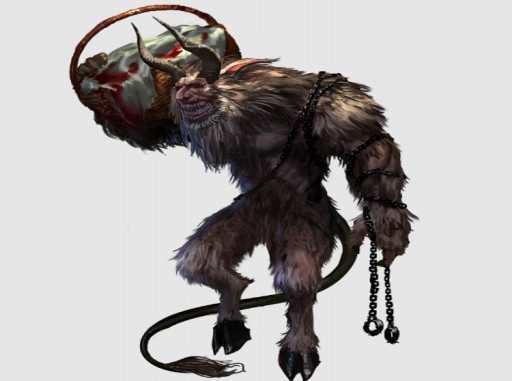
For those who want a more holiday-themed Pathfinder session, there is always Krampus. Krampus goes around villages tormenting people he thinks are naughty. Of course, naughtiness can be relative and he often just uses minor things as an excuse to do grievous bodily harm.
Krampus has a large spiked chain that can grab people or slash them. Krampus also has a lot of cold magic like wall of ice at his disposal. He also has baleful polymorph.
Speaking of polymorph, he has another more dangerous ability: Stuffing people into his bag.. Anyone who gets stuffed into his bag can be regressed to their childhood form. This cuts your skills back to trained and your size gets reduced, making it hard to maneuver.
Krampus stats:
- Level 21
- Perception +38; blizzard sight, scent (imprecise) 60 feet, see invisibility
- Languages Common; tongues
- Skills Acrobatics +36, Athletics +39, Festival Lore +35, Intimidation +42, Society +35, Stealth +39, Survival +38
- Str +10, Dex +7, Con +10, Int +6, Wis +6, Cha +10
- Blizzard Sight Krampus ignores circumstance penalties to visual Perception checks due to ice or snow, as well as concealment due to ice or snow.
- Items +3 greater striking cold iron spiked chain
- AC 46; Fort +39, Ref +34, Will +35
- HP 380; Immunities cold, death effects; Resistances physical 20; Weaknesses good 15
- Frightful Presence (aura, emotion, fear, mental) 120 feet, DC 42
- Limited Immortality Though Krampus still needs to eat, drink, and sleep, he doesn't age and can't die of old age. If Krampus is killed, a new Krampus forms elsewhere in the world after a year's time. The new Krampus retains the memories of the previous iteration and likely holds a grudge against whoever killed him the year before. If a method to disrupt this cycle exists, it has yet to be discovered by mortals.
- Speed 60 feet; air walk, snowstep
- Melee spiked chain +42 [+37/+32] (disarm, evil, finesse, magical, reach 60 feet, trip), Damage 3d8+18 slashing plus Improved Grab
- Melee claw +41 [+37/+33] (agile, magical, reach 10 feet), Damage 4d6+25 slashing plus Improved Grab
- Melee horn +41 [+36/+31] (magical), Damage 4d10+25 piercing
- Primal Innate Spells DC 42, attack +34; 9th baleful polymorph (×2), cone of cold (×2), wall of ice; Cantrips (10th) dancing lights, ray of frost, sigil, tanglefoot; Constant (9th) air walk, see invisibility, tongues
- Capture (attack) Requirements Krampus has a Medium or smaller creature grabbed; Effect Krampus attempts to stuff the grabbed creature into his basket, attempting an Athletics check against the target's Reflex DC. If he succeeds, the creature is shoved into Krampus's basket and Krampus's spiked chain or claw is freed for future Strikes.
- The captured creature is grabbed, slowed 1, and subjected to Krampus's regression ability (see below) at the start of each round it is captured. If the victim Escapes (DC 48), it climbs out of the basket. A captured creature can attack the interior of the basket, but only with unarmed attacks or weapons of light Bulk or less, against an AC of 40. If the captured creature deals 40 slashing or piercing damage, the basket is broken and all the creatures inside spill out. A creature that gets free by either Escaping or by someone breaking the basket is deposited in a square of their choosing adjacent to Krampus.
- The basket is an extradimensional space, so the weight of the creatures within doesn't count against Krampus's Bulk limit. Up to four Small creatures or two Medium creatures can fit in the basket at one time. Krampus can Repair the basket as a 2-action activity that doesn't require tools. If the basket is lost or destroyed, Krampus can create a new one with 1 hour of work. The basket functions as a normal sack if used by anyone other than Krampus.
- Punish the Naughty (concentrate) Krampus designates a single target he can see as “naughty.” He gains a +2 circumstance bonus to Perception checks when he Seeks the naughty target and a +2 circumstance bonus to Survival checks to Track the naughty target. On melee attacks against the naughty target, Krampus's spiked chain gains the agile trait. In addition, when Krampus Grabs the naughty target, he can attempt to Capture them as a free action. Krampus can have only one naughty target at a time.
- Regression (curse, polymorph, primal, transmutation) A creature that starts their turn Captured in Krampus's basket must attempt a DC 44 Fortitude save or be regressed back to their childhood. The target shrinks one size. In addition, all of the target's proficiencies of expert and better are reduced to trained, which might restrict the use of certain feats. The effect persists for 24 hours, after which the target regains their normal size and their proficiencies return to normal. A creature currently under the effects of regression can't be further affected by this ability.
- Snowstep Krampus ignores difficult terrain and greater difficult terrain caused by snow and ice, and he leaves no tracks when moving through areas of snow or ice.
